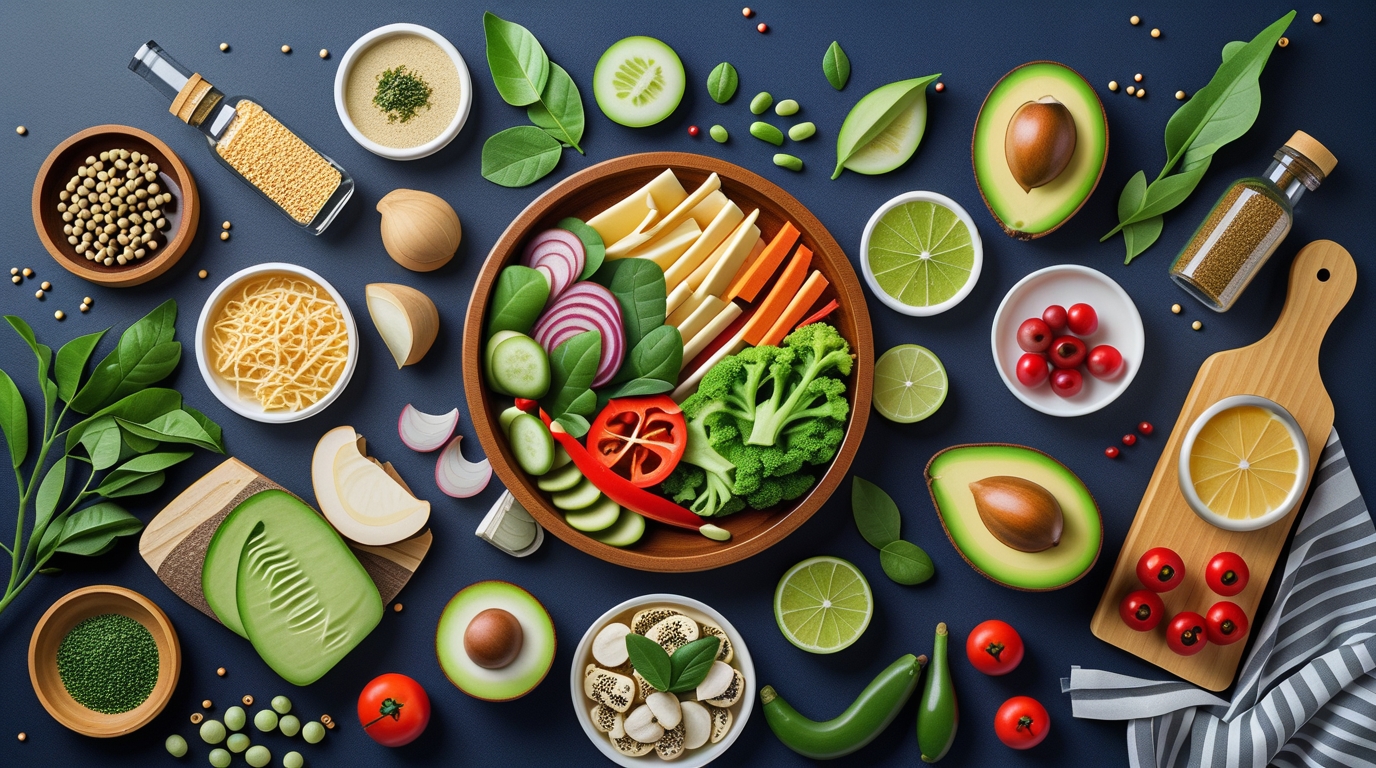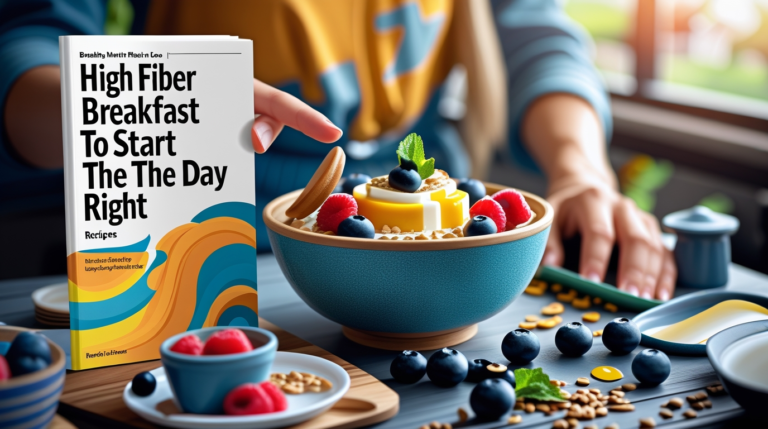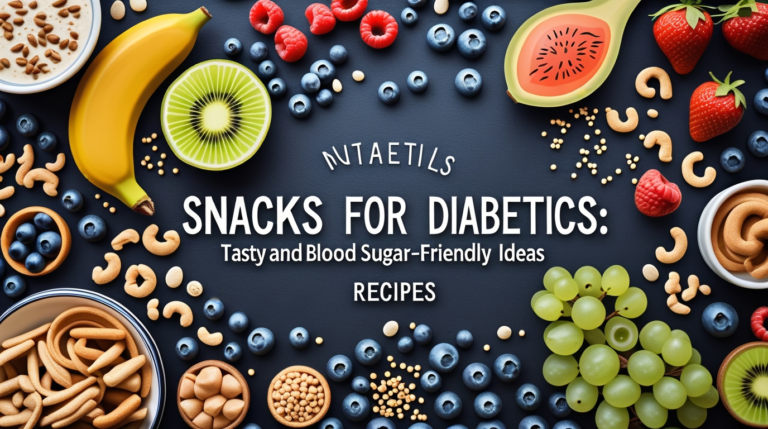In the modern world where processed foods and sedentary lifestyles prevail, maintaining digestive health is more crucial than ever. High fiber recipes can be a cornerstone in improving one’s digestive well-being. By incorporating fiber-rich meals into your diet, you not only promote smoother digestion but also foster an environment where beneficial gut bacteria thrive. Does your diet need a revamp to optimize your digestive system? Let’s explore some delectable ways to get there.
Why Fiber is Essential for Digestive Health
Fiber plays a pivotal role in maintaining not just digestive health, but overall well-being. It assists in keeping the digestive tract clean and functional by facilitating regular bowel movements. Lack of fiber in your diet can lead to constipation, hemorrhoids, and even diverticular disease. Furthermore, a high-fiber diet has been associated with a reduced risk of developing colon cancer.
Soluble vs. Insoluble Fiber
The fiber in foods is essentially classified into two categories: soluble fiber and insoluble fiber. Soluble fiber dissolves in water to form a gel-like substance, helping to lower blood glucose levels and cholesterol. Insoluble fiber, on the other hand, remains intact as it travels through the digestive system, aiding in the movement of material through the digestive tract and increasing stool bulk.
- Soluble Fiber: Found in oats, peas, beans, apples, citrus fruits, carrots, barley, and psyllium.
- Insoluble Fiber: Found in whole wheat flour, wheat bran, nuts, beans, and vegetables like cauliflower, green beans, and potatoes.
High Fiber Recipes to Enhance Digestive Health
Incorporating high fiber recipes into your daily meals can be both gratifying and beneficial. Here are some palatable options that emphasize the importance of dietary fiber:
Fiber-Rich Breakfast Ideas
Starting your day with a fiber-rich meal sets a positive tone. Here are some breakfast options to consider:
- Overnight Oats: Oats are a great source of soluble fiber. Prepare them with your favorite fruits and a serve of yogurt or milk.
- Chia Seed Pudding: Mix chia seeds with almond milk and let it sit overnight. Add fruits like kiwi or banana in the morning for additional fiber.
- Whole Grain Toast with Avocado: Top whole grain toast with slices of ripe avocado and sprinkle some chia seeds for an extra fiber boost.
Nourishing Lunch Recipes
Lunchtime is an excellent opportunity to incorporate a significant portion of your daily fiber intake. These recipes are sure to keep your digestive tract in top shape:
- Lentil Soup: Packed with both soluble and insoluble fiber, this hearty soup is perfect for digestive health.
- Quinoa Salad: Quinoa is a complete protein and a good source of fiber. Combine it with chopped vegetables, leafy greens, and nuts.
- Vegetable Stir-Fry: Use fiber-rich vegetables like broccoli, bell peppers, and carrots sautéed in olive oil with a sprinkle of sesame seeds.
Dinner Delights for Digestive Health
Dinner doesn’t have to compromise on fiber content. The following meals will satiate your hunger and maintain digestive efficiency:
- Black Bean Tacos: Use black beans as a filling, topped with cabbage, onions, and tomatoes. Serve in whole grain tortillas.
- Stuffed Bell Peppers: Fill bell peppers with a mixture of brown rice, lentils, and seasonal vegetables.
- Whole Wheat Pasta Primavera: Opt for whole wheat pasta with sautéed vegetables like zucchini, spinach, and mushrooms.
Tips for Adding More Fiber to Your Diet
Increasing your fiber intake doesn’t have to be a daunting task. Follow these tips to integrate more fiber effortlessly:
Gradually increase fiber in your diet to prevent digestive distress. Your body needs time to adjust to a higher fiber intake.
- Hydrate: Drinking plenty of water assists fiber in its bulking task and aids smooth digestion.
- Snack Smartly: Replace processed snacks with fiber-rich options like fruit, vegetables, or nuts.
- Read Labels: Become informed about the fiber content in packaged foods by reading labels carefully.
The Long-Term Benefits of a High Fiber Diet
Over time, a consistent intake of fiber-rich foods can contribute to not only digestive wellness but also a decrease in chronic diseases like type 2 diabetes, heart disease, and certain cancers. Moreover, high fiber diets are linked with better weight management as they often lead to a quicker feeling of fullness, reducing the propensity for overeating.
Key Takeaways
In conclusion, integrating high fiber recipes into your diet is a simple yet effective way to support your digestive health and overall well-being. A balanced approach that includes both soluble and insoluble fiber will ensure optimal digestive function and long-term health benefits.
If you’re ready to start incorporating more fiber into your meals, check out our detailed guides on Smart Meal Planning and The Benefits of Whole Grains.
Make sure to experiment with different recipes, and feel free to share your personal favorites in the comments section. Don’t forget to subscribe to our newsletter for more recipes and health tips!
Do you have any go-to high-fiber meals? We’d love to hear your thoughts and experiences. Share them below!





Leave a Comment